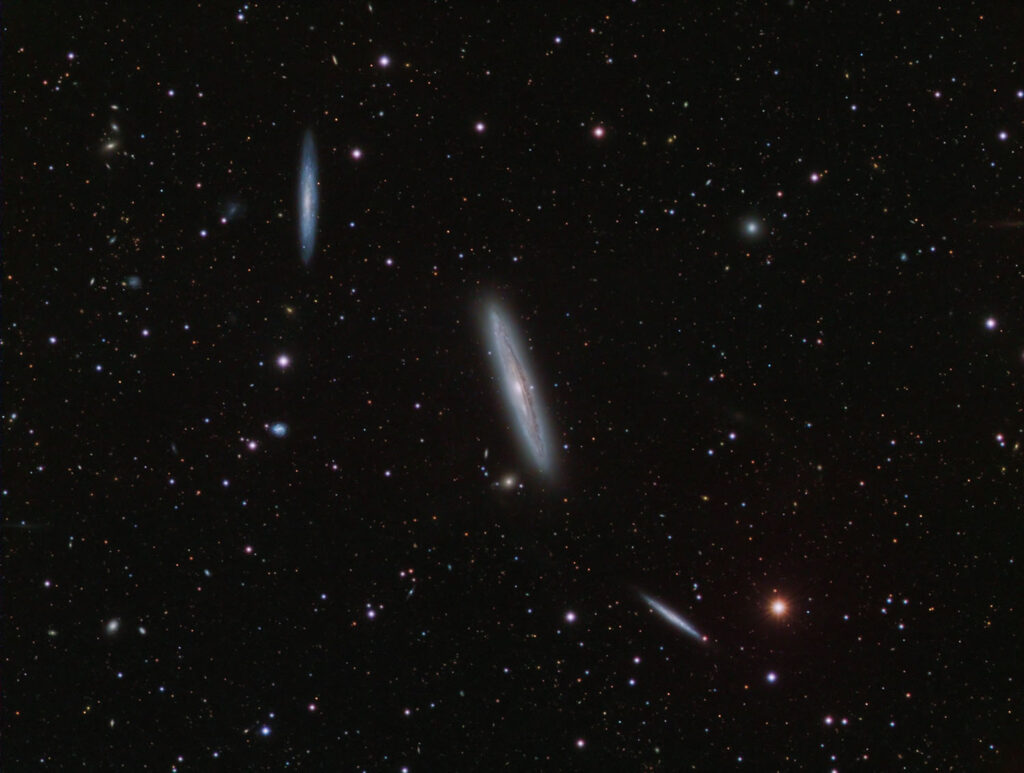NGC 4216
Spiral Galaxy, Virgo
- Description
- Technical
- Links
NGC 4216 is a metal-rich intermediate spiral galaxy located not far from the center of the Virgo Cluster of galaxies, roughly 55 million light-years away. It is seen nearly edge-on.
NGC 4216 is one of the largest and brightest spiral galaxies of the Virgo Cluster, with an absolute magnitude that has been estimated to be −22 (i.e.: brighter than the Andromeda Galaxy), and like most spiral galaxies of this cluster shows a deficiency of neutral hydrogen that’s concentrated within the galaxy’s optical disk and has a low surface density for a galaxy of its type. This explains why NGC 4216 is considered an anemic galaxy by some authors, also with a low star formation activity for a galaxy of its type. In fact, the galaxy’s disk shows pillar-like structures that may have been caused by interactions with the intracluster medium of Virgo and/or with nearby galaxies.
In NGC 4216’s halo, besides a rich system of globular clusters with a number of them estimated in around 700 (nearly five times more than the Milky Way), two stellar streams that are interpreted as two satellite galaxies being disrupted and absorbed by this galaxy are present.
NGC 4216 seems to be in a place of the Virgo cluster where dwarf galaxies are being destroyed/accreted at a high rate, with it suffering many interactions with these type of galaxies.
Telescope: Astro Physics 175EDF f8.3
Mount: Astro Physics 3600GTO “El Capitan”
Camera: SBIG STT8300
Guider: Mini Borg 50 / SBIG STi
L: 75×10 mins = 750 mins, R: 24×10 mins = 240 mins, G: 25×10 mins = 250 mins, B: 27×10 mins = 270 mins
Total Imaging Time: 25h 10m
Data Imaged remotely over 7 nights during February 2020.
Data acquisition & Processing by David Churchill.
None

